
Givet is a commune in the Ardennes department in northern France surrounded on three sides by the Belgian border. It lies on the river Meuse where Emperor Charles V built the fortress of Charlemont. It borders the French municipalities of Fromelennes to the east and Rancennes to the south and Foisches to the southeast.

Awala-Yalimapo is a commune on the north coast of French Guiana, close to the border with Suriname. The seat of the commune is the settlement of Awala where the town hall is located. Other settlements in the commune are: Yalimapo, Ayawande, and Piliwa. The majority of the inhabitants are Kaliña Amerindian people.

Chooz is a commune in the Ardennes department in northern France.

The Carrière des Nerviens Regional Nature Reserve is a protected area in the Nord-Pas-de-Calais region of northern France. It was established on 25 May 2009 to protect a site containing rare plants and covers just over 3 hectares. It is located in the municipalities of Bavay and Saint-Waast in the Nord department.

A Zone naturelle d'intérêt écologique, faunistique et floristique, abbreviated as ZNIEFF, is a type of natural environment recognized by France.
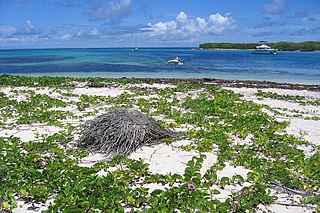
Petite Terre Islands National Nature Reserve is a reserve of the Petite Terre Islands in Guadeloupe. The reserve was established by Decree No. 98-801 of 3 September 1998 as the nature reserve for the islands of Petite Terre. It covers an area of about 990 hectares, which is demarcated by five points fixed with buoys, and includes a land area of 148.6 hectares with the balance as sea area.

The pointe de Givet is the extreme north of the department of Ardennes in the Grand Est region in northeastern France. This small territory is 25 km in length and 10 km wide and forms a small strip extending deep into Belgian Ardennes along the Meuse. Larger cities in the pointe de Givet include Revin, Fumay, and Givet.
A national nature reserve, in French réserve naturelle nationale, (RNN) is a protected area that is part of natural reserves of France (RNF) and whose status is defined by the law on local democracy of February 27, 2002. It is a tool for the long-term protection of spaces, species or geological objects. The duration of its protection is unlimited.

The Vireux-Molhain national nature reserve (RNN104) is a national nature reserve of geological and paleontological interest. It is located in the Pointe de Givet, department of Ardennes, on the border between France and Belgium. It covers an area of 1.82 ha. The site is known as Customs Wall as it is near an old customs post. This outcrop of Middle Devonian shale is notable for the quantity and good state of preservation of its fossils. Trilobites are well-represented.
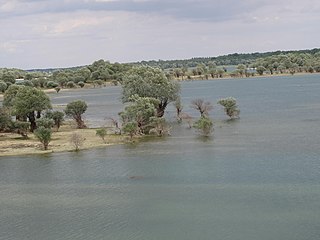
The Forêt d'Orient National Nature Reserve (RNN154) is a national nature reserve located in Champagne-Ardenne in the Grand Est region in France. Located within the Orient Forest Regional Natural Park, it was created in 2002 and protects 1,560 hectares of lake and forest areas.
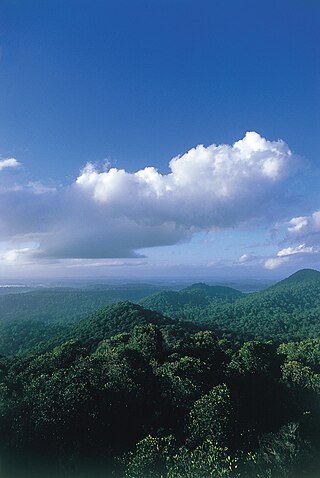
The Petites Montagnes Tortue Biological Reserve is a wilderness area in French Guiana, France. Petites Montagnes Tortue is located about six kilometres from Régina. It is a mountain range rich in quartz and quartzites with a summit of 287 metres (942 ft). The mountains are home to a diverse flora and fauna with about 20 species which are rare or endemic.
The Récif fossile de Marchon - Christian Gourrat Regional Nature Reserve (RNR284) is a Regional Nature Reserve located in Auvergne-Rhône-Alpes. Established in 2015, it spreads over 0.1 hectares and protects a limestone outcrop bearing fossils from the Mesozoic era.

The Bois du Parc National Nature Reserve (RNN39) is a National Nature Reserve located in the department of Yonne. Established in 1979, it spreads over 45 ha, and its most interesting features are its steep-sided cliffs in an important coral reef dating from the Jurassic era.
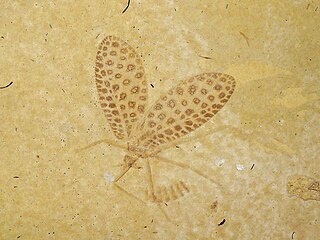
The Géologique du Luberon National Nature Reserve (RNN90) is a national nature reserve located in Provence-Alpes-Côte d'Azur. Established in 1987, it occupies 312 hectares and protects 28 scattered geological sites dated from the Cenozoic.

The Géologique de Normandie-Maine Regional Nature Reserve (RNR216) is a geological regional nature reserve located in the Normandie region. Established in 2009, it spreads over 0.37 hectares and protects an extraction site of Ordovician limestone, renowned for its microfossils of conodonts. By its size, it is the third smallest regionale nature reserve in France.
The Géologique de Pontlevoy Regional Nature Reserve is a regional nature reserve located in the Centre-Val de Loire region of France. Established in 2011, it spreads over 1.91 hectares and protects a former Beauce limestone quarry preserving faluns.

Parc naturel régional de la Martinique is one of 54 French regional nature parks. With a surface area of approximately 63,000 ha (240 sq mi), it covers more than half of the island, overlapping 32 of 34 communes - including approximately 100,000 inhabitants. The park works to preserve one of 34 biodiversity hotspots on the planet. The biodiversity hotspot map identifies areas for preservation by two criteria, one being a certain rate of endemism: that the flora and fauna are not found elsewhere, and because at least 70% of its primary vegetation has been lost.

The Toarcien National Nature Reserve (RNN91) is a French national nature reserve located in Nouvelle-Aquitaine, near the city of Thouars, from which the name Toarcian is derived. Established in 1987, it occupies an area of 0.61 hectares, making it the smallest national nature reserve in France. It protects two former quarries preserving the stratotype of the Toarcian stage.
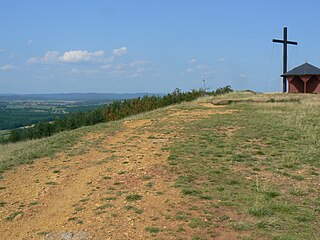
The Bastberg, also called Petit-Bastberg, is a summit located near the Northern Vosges Regional Nature Park, in the commune of Bouxwiller. It culminates at 326 meters. The ecosystem is fragile due to human and natural intrusions, and has been the subject of conservation measures since 1989.




















